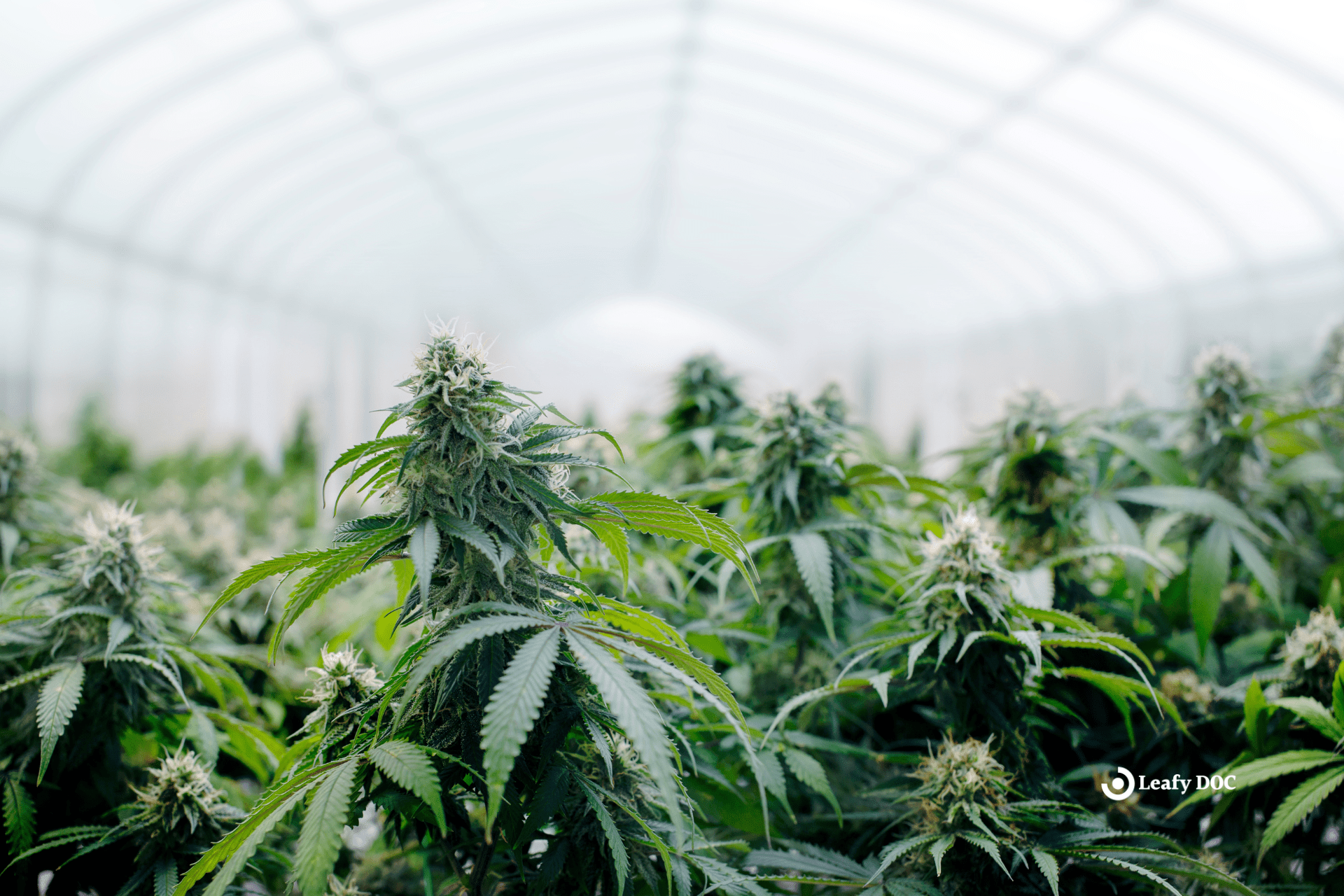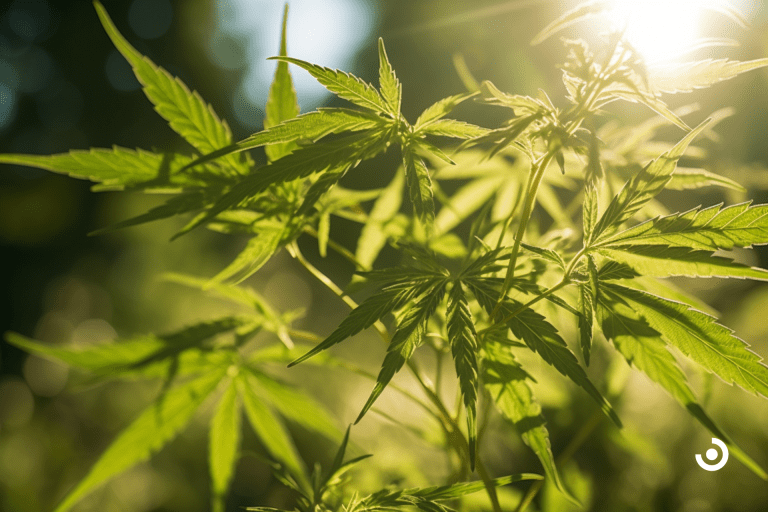The Environmental Impact of Cannabis Cultivation: Sustainability and Best Practices
by Haley Mills · June 22, 2023
Understand the environmental impact of cannabis cultivation and learn about sustainable practices. Discover how to reduce your carbon footprint and promote eco-friendly cannabis production.

As the global acceptance of cannabis for medicinal and recreational purposes continues to rise, the environmental implications of its cultivation become increasingly significant. This article examines the ecological footprint of cannabis production, focusing on the various factors contributing to its environmental impacts, such as energy consumption, water usage, and land management.
By exploring the latest scientific research, we aim to highlight the importance of sustainable practices in the cannabis industry, offering innovative solutions and best practices that can reduce its environmental toll while ensuring this burgeoning sector’s continued growth and success.
The Rising Importance of Environmental Sustainability in Cannabis Cultivation
The global cannabis industry continues to grow exponentially, driven by increasing acceptance and legalization for medical and recreational use; there is a mounting urgency to address its environmental footprint. The environmental sustainability of cannabis cultivation has gained significance in reducing its environmental impact and maintaining a competitive edge in the market.
Both indoor and outdoor cultivation methods have unique environmental concerns, including energy consumption, water usage, waste generation, and greenhouse gas emissions. By adopting sustainable practices, the cannabis industry can ensure long-term growth while minimizing its detrimental environmental effects and demonstrating a commitment to responsible practices.
Assessing the Ecological Footprint of Cannabis Production: Key Factors and Research Findings
Numerous factors contribute to the environmental impact of cannabis cultivation, some of which are:
a. Water usage: Indoor and outdoor cannabis cultivation is water-intensive, leading to water pollution, diversion, and potential harm to ecosystems. Some methods to mitigate these effects are improving irrigation efficiency, harvesting rainwater, and recycling water.
b. Energy consumption: Indoor cannabis cultivation demands substantial energy for heating, ventilation, air conditioning, and lighting systems, resulting in significant greenhouse gas emissions. Transitioning to energy-efficient systems, using renewable energy sources, and optimizing cultivation practices can help curb energy consumption and emissions.
c. Waste generation: Cannabis production generates considerable waste, including plant material, plastic packaging, and other disposable items. Implementing waste reduction, recycling, and composting initiatives can help minimize the industry’s waste footprint.
d. Land use and soil health: Cannabis cultivation can lead to soil erosion and depletion of nutrients. However, cannabis plants can absorb and store heavy metals, benefiting soil remediation. Promoting organic cultivation, crop rotation, and conservation practices can help maintain soil health and biodiversity.
Is the Cannabis Industry Sustainable? A Comprehensive Analysis
The sustainability of the cannabis industry largely depends on the cultivation methods employed, the adoption of best practices, and the commitment of industry stakeholders to minimize the environmental impacts. While outdoor cultivation typically has lower energy requirements and costs, it is subject to weather conditions and may contribute to soil erosion and water pollution. Indoor cultivation allows greater control over growing conditions but requires substantial energy input, resulting in a larger carbon footprint.
To enhance sustainability, the cannabis industry must adopt a holistic approach that addresses the various environmental concerns associated with cultivation. This includes transitioning to energy-efficient technologies, water conservation strategies, organic farming practices, sustainable packaging solutions, and waste reduction initiatives. Moreover, engaging in community development and promoting transparency in the supply chain can further strengthen the industry’s commitment to sustainability.
As the industry continues to evolve and expand, continuous research and innovation will be crucial in promoting sustainable cannabis cultivation. By adopting best practices, embracing new technologies, and collaborating with policymakers, the cannabis industry can pave the way for a more environmentally friendly future.
Hemp Industry: Environmental Pros and Cons
Pros:
- Carbon Sequestration: Hemp plants absorb large amounts of CO2 from the atmosphere, sequestering carbon and contributing to the fight against climate change.
- Soil Remediation: Hemp plants can remove toxins, heavy metals, and other contaminants from the soil, making it a valuable crop for phytoremediation efforts.
- Biodegradable Products: Hemp fibers can produce biodegradable alternatives to plastic and other synthetic materials, reducing environmental waste and pollution.
- Low Pesticide Requirements: Hemp is a resilient crop resistant to many pests and diseases, reducing the need for harmful chemical pesticides.
Cons:
- Water Consumption: Like other cannabis plants, hemp can be water-intensive, especially during vegetative growth. Sustainable water management practices are crucial to minimize the impact on water resources.
- Land Use: Large-scale hemp cultivation can contribute to land-use change, potentially leading to deforestation or loss of biodiversity if not managed sustainably.
- Processing Pollution: Some methods of processing hemp fibers can generate waste and pollution. Adopting cleaner processing technologies can help mitigate these impacts.
Energy Efficiency: Reducing the Carbon Footprint of Cannabis Growers
a. LED Lighting: Switching to energy-efficient LED lighting systems can significantly reduce energy consumption in indoor cannabis cultivation. LEDs produce less heat and provide a more balanced light spectrum, making them a superior choice for cannabis growth.
b. Automation and Monitoring: Implementing automated systems and sensors to monitor and control temperature, humidity, and light can optimize energy use while maintaining optimal growing conditions for cannabis cultivators.
c. Renewable Energy Sources: Utilizing solar, wind, or other renewable energy sources can help cannabis growers offset their energy consumption and reduce greenhouse gas emissions at cannabis cultivation sites.
d. Insulation and Building Design: Proper insulation and energy-efficient building design in indoor cultivation facilities can minimize heat loss, reducing the need for energy-intensive heating and cooling systems.
Water Conservation Strategies in Cannabis Agriculture
Drip Irrigation: This method delivers water directly to the plant’s root zone, reducing water loss and energy consumption through evaporation and runoff. Drip irrigation systems can be more efficient than traditional sprinkler systems, conserving water and reducing overall usage.
Rainwater Harvesting: Collecting and storing rainwater for irrigation purposes can help cannabis growers minimize their reliance on municipal water supplies or natural water sources, reducing the impact on local ecosystems.
Water Recycling and Treatment: By capturing, treating, and reusing water from cultivation processes, growers can significantly reduce water consumption and minimize wastewater discharge into the environment.
Deficit Irrigation: This practice involves applying less water than the crop requires, encouraging the plant to develop deeper root systems and use water more efficiently. Research into the specific water needs of cannabis plants is necessary to ensure that deficit irrigation does not negatively impact yield or quality.
Pesticide Use and Organic Practices: Balancing Productivity and Environmental Impact
Using pesticides in cannabis cultivation facilities can lead to environmental contamination, posing risks to ecosystems and public health. However, pest management is essential to maintain the quality and yield of cannabis crops. Organic cultivation practices offer a solution to minimize pesticide use while maintaining productivity. By employing integrated pest management (IPM) techniques, growers can effectively control pests using biological, cultural, and physical methods.
Introducing beneficial insects, crop rotation, and companion planting can further reduce the reliance on chemical pesticides. Additionally, using organic fertilizers and soil amendments can improve soil health and fertility, promoting healthier plants with increased resistance to pests and diseases. By adopting organic practices, cannabis growers can contribute to a more sustainable industry while addressing consumer demand for eco-friendly products.
Sustainable Packaging and Waste Management in the Cannabis Industry
The cannabis industry generates significant waste, particularly from single-use plastic packaging. Sustainable packaging solutions are essential to reducing the industry’s waste footprint and environmental impact. Some strategies for implementing sustainable packaging include:
- Using biodegradable or compostable materials, such as plant-based plastics or hemp-derived packaging, to reduce waste and pollution from traditional plastic materials.
- Implementing reusable or refillable packaging systems that encourage consumers to return containers for reuse or refilling, cutting down on waste generation.
- Designing packaging with minimal materials and using recycled or recyclable content to reduce the overall environmental footprint of the packaging process.
In addition to sustainable packaging, effective waste management practices can help minimize waste generation in cannabis cultivation and processing. Composting plant waste, recycling plastic materials, and implementing waste reduction in cannabis facilities throughout the supply chain can contribute to a more sustainable and environmentally responsible industry.
Social Responsibility and Community Engagement: A Holistic Approach to Sustainability
Environmental sustainability is only one aspect of a responsible and successful cannabis industry. Social responsibility and community engagement play a critical role in ensuring the long-term viability and positive impact of the cannabis sector. By promoting fair labor practices, equitable access to economic opportunities, and investing in local communities, the cannabis industry can foster social and economic development alongside environmental sustainability. Some strategies for promoting social responsibility and community engagement include:
- Prioritizing diversity, equity, and inclusion in hiring and management practices, ensuring that the cannabis industry provides opportunities for underrepresented and marginalized communities.
- Investing in community development projects, such as affordable housing, education, and healthcare initiatives, to support the well-being and prosperity of the communities in which the cannabis industry operates.
- Engaging in transparent and open communication with local stakeholders, including residents, businesses, and government officials, to address concerns, build trust, and collaborate on solutions to shared challenges.
By adopting a holistic approach to sustainability that encompasses environmental, social, and economic considerations, the cannabis industry can demonstrate its commitment to responsible growth and a positive societal impact.
Innovative Technologies and Practices Shaping the Future of Sustainable Cannabis Cultivation
Technological advancements and innovation play a crucial role in addressing the environmental challenges of cannabis cultivation. As the industry continues to evolve, adopting cutting-edge technologies can significantly improve the sustainability of cannabis production. Some areas where technological innovation can drive sustainability include:
- Precision agriculture and data-driven decision-making: Using sensors, drones, and artificial intelligence can help growers optimize resource use, reduce waste, and improve yields, all while minimizing environmental impacts.
- Efficient lighting and climate control systems: Advancements in LED lighting, heating, ventilation, and air conditioning (HVAC) technologies can significantly reduce energy consumption and greenhouse gas emissions in indoor cannabis cultivation.
- Biotechnology and plant breeding: Developing new cannabis varieties with increased resistance to pests, diseases, and environmental stressors can help reduce the reliance on chemical inputs and improve overall sustainability.
- Waste-to-energy systems: Converting waste generated in a cannabis cultivation facility into renewable energy sources, such as biogas, can help offset energy consumption and reduce the industry’s carbon footprint.
By embracing technological innovation and continuously seeking new ways to improve environmental performance, the cannabis industry can pave the way for a more sustainable and eco-friendly future.
Regulations, Certifications, and Incentives: Encouraging Environmental Stewardship in the Cannabis Sector
Establishing and enforcing regulations, certifications, and incentives that promote environmental stewardship and responsible business practices has become increasingly important. These measures can help ensure the cannabis sector remains sustainable and environmentally friendly while meeting consumer demand for eco-conscious products and services.
- Regulatory Frameworks: Governments at various levels should develop comprehensive regulations that address the environmental impacts of cannabis cultivation, processing, and distribution. These regulations may include water and energy usage guidelines, waste management, emissions, and pesticide application. Strict enforcement of these regulations is crucial to ensure compliance and drive continuous improvement within the industry.
- Certifications and Eco-labels: Third-party certification programs and eco-labels can provide a valuable tool for consumers to identify cannabis products and companies that adhere to high environmental and ethical standards. Examples of certification programs may include organic, fair trade, or sustainable agriculture certifications. These certifications can serve as a market-based incentive for businesses to adopt environmentally responsible practices.
- Government and Industry Incentives: Financial incentives, such as grants, tax credits, or low-interest loans, can be offered by governments and industry organizations to encourage cannabis businesses to invest in sustainable technologies and practices. These incentives can help offset the initial costs associated with implementing environmentally friendly solutions, making it more attractive for businesses to prioritize sustainability.
- Education and Training Programs: Governments, industry associations, and educational institutions should collaborate to develop and offer training programs for cannabis industry professionals. These programs can help educate growers, processors, and other stakeholders about best practices for environmentally responsible cannabis cultivation and processing. By building a workforce that is knowledgeable about sustainable practices, the industry can foster a culture of environmental stewardship.
- Public-Private Partnerships: Collaboration between the public and private sectors can help drive innovation and investment in sustainable cannabis technologies and practices. Governments and industry stakeholders can work together to identify areas of research and development that have the potential to advance the industry’s environmental performance. Joint funding opportunities and collaborative research projects can accelerate the development and implementation of innovative solutions.
- Consumer Education and Outreach: Raising awareness among consumers about the environmental impacts of cannabis cultivation and the importance of supporting sustainable businesses is essential. Public awareness campaigns, educational materials, and eco-labeling initiatives can help inform consumers about the benefits of choosing environmentally responsible cannabis products, encouraging market demand for sustainable practices.
Researching: A narrative review on environmental impacts of cannabis cultivation
A study in the Journal of Cannabis Research provides a narrative review of the environmental impacts of cannabis cultivation, focusing on the effects on water, air, soil, energy consumption, and carbon footprint. The results indicate that indoor and outdoor cannabis cultivation is water-intensive, leading to water pollution and diversion that can negatively affect ecosystems. Cannabis plants also emit biogenic volatile organic compounds (BVOCs), which can cause indoor air quality issues.
Indoor cannabis cultivation facilities are energy-consuming, primarily due to heating, ventilation, air conditioning, and lighting, resulting in greenhouse gas emissions and air pollution, among other environmental risks. Cannabis cultivation can contribute directly to soil erosion, while plants can absorb and store heavy metals.
This study suggests that technologies like precision irrigation could help reduce water use, and tools such as life cycle analysis could advance the understanding of cannabis cultivation’s environmental impacts. The authors emphasize the need for more research on cannabis cultivation’s physiological properties, best management practices, and environmental impacts to guide policy-making and industry practices in the future.
What’s Next for Sustainability in the Cannabis Industry?
The environmental impact of marijuana cultivation is a pressing issue that warrants further attention from policymakers, industry stakeholders, and the scientific community. By implementing sustainable practices and adopting innovative solutions, the cannabis industry can minimize its ecological footprint and serve as a model for other agricultural sectors in the pursuit of a greener future.
We have explored the various factors contributing to the environmental impact of cannabis production, emphasizing the importance of proactive measures to promote sustainability. It is crucial that we continue to advance research and share knowledge to establish best practices that ensure the long-term viability and success of the cannabis industry while safeguarding our planet’s precious resources.
Last Updated: August 8, 2024
Get Approved for Your Medical Marijuana Card in Minutes!

Get Your Medical Card
Connect with a licensed physician online in minutes

Like This Article?
Share with your friends
Table of Contents
Keep Reading
-
The Psychotropic Effects Of Medical Marijuana Explained
Unveiling the Mind-Bending Benefits: Explore the Psychotropic Effects of Medical Marijuana and Revolutionize Your Healthcare Journey. Click now to discover more!
-
The Benefits of Medical Marijuana For Crohn’s Disease
Find out how medical marijuana can help alleviate symptoms of Crohn’s Disease. Learn about the benefits and why it’s gaining popularity as a treatment option. Click here to discover the relief you’ve been searching for with MMJ for Crohn’s Disease.
-
Exploring The Benefits Of CBD Oil For Sleep Disorders
Experience the transformative power of CBD oil for sleep disorders. Wake up refreshed and say goodbye to sleepless nights with this natural remedy. Click here to discover how CBD oil can improve your sleep!



